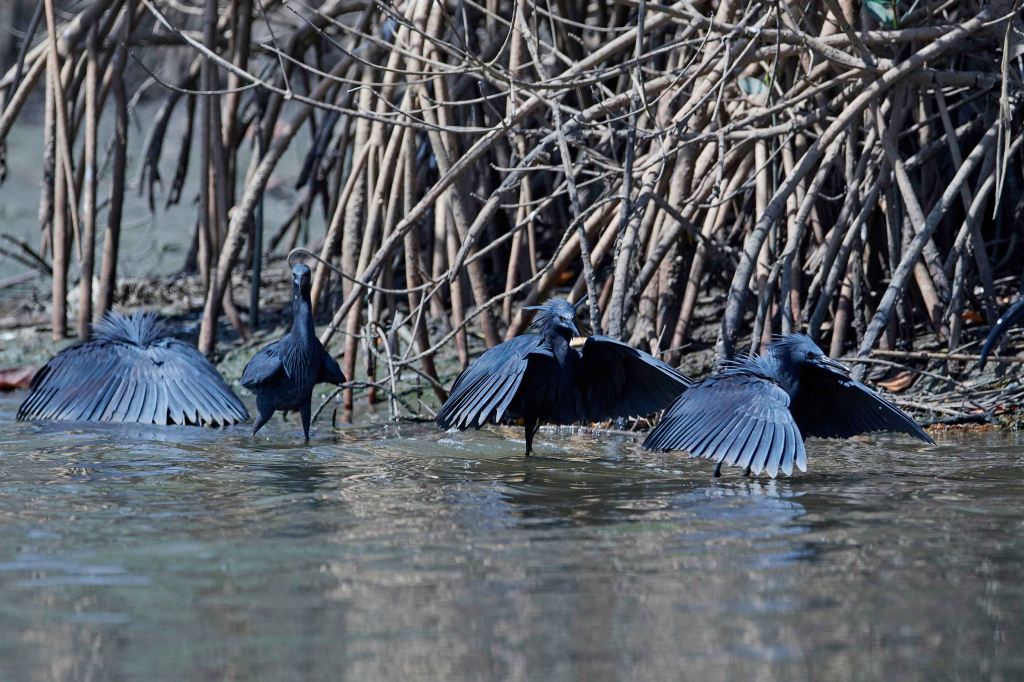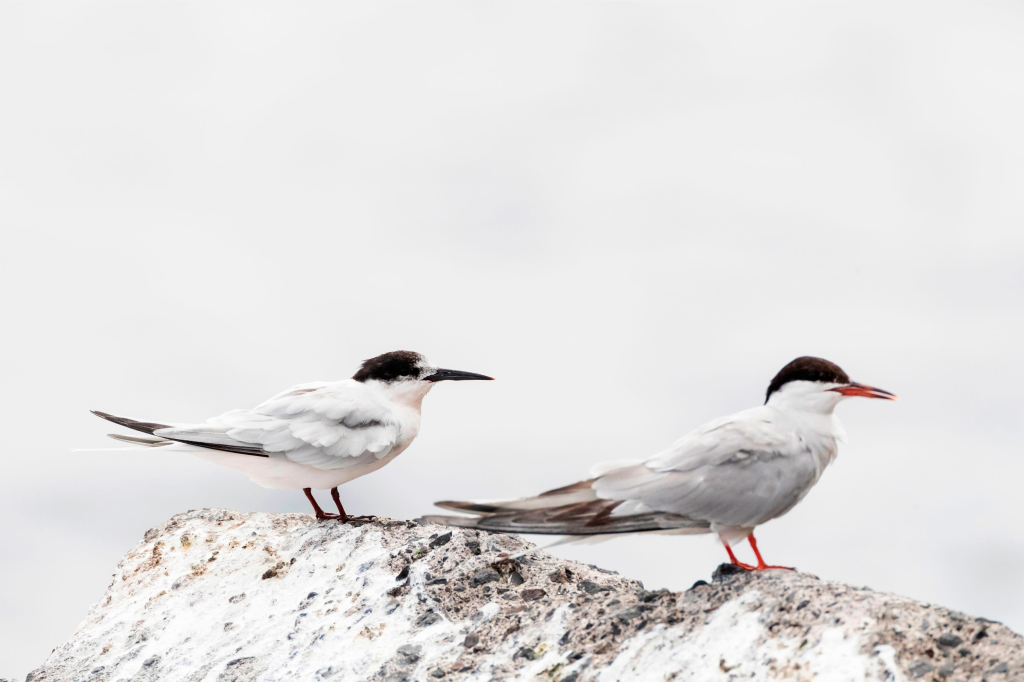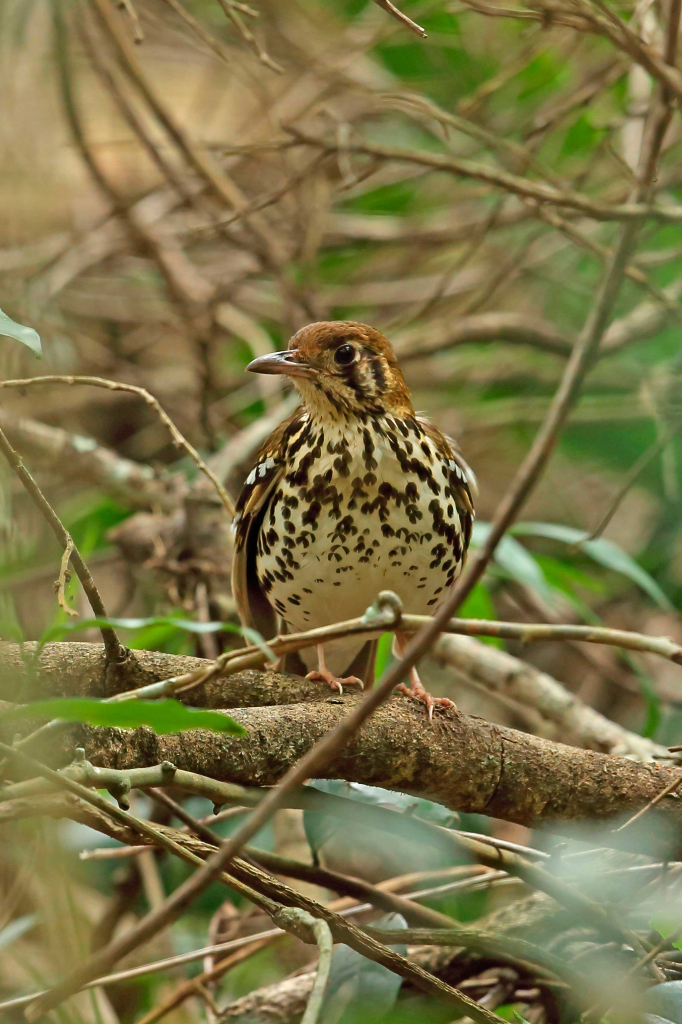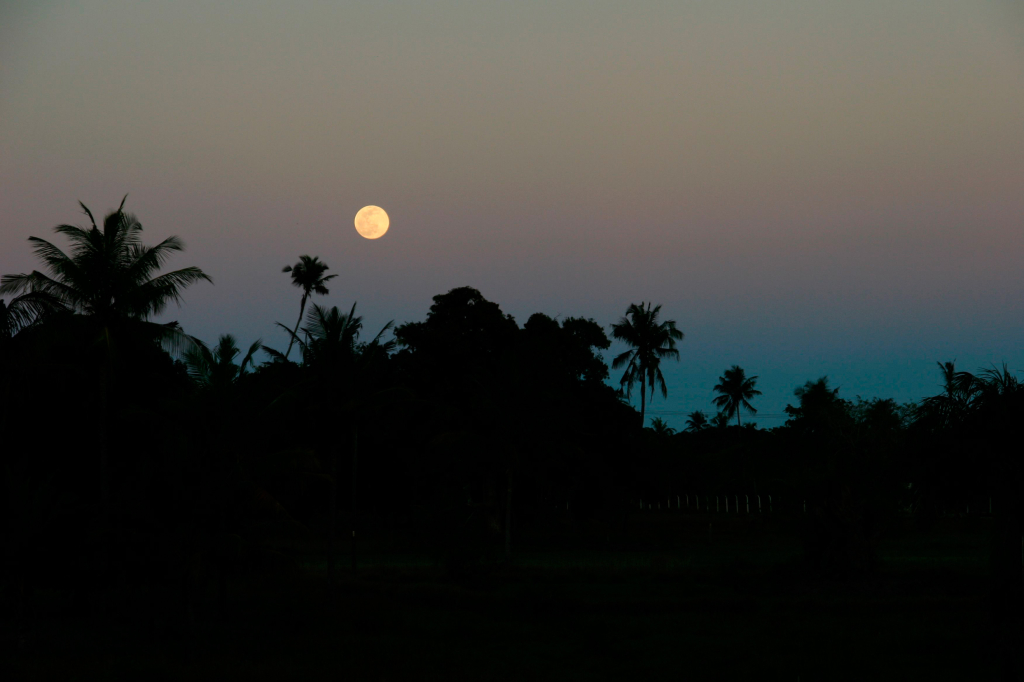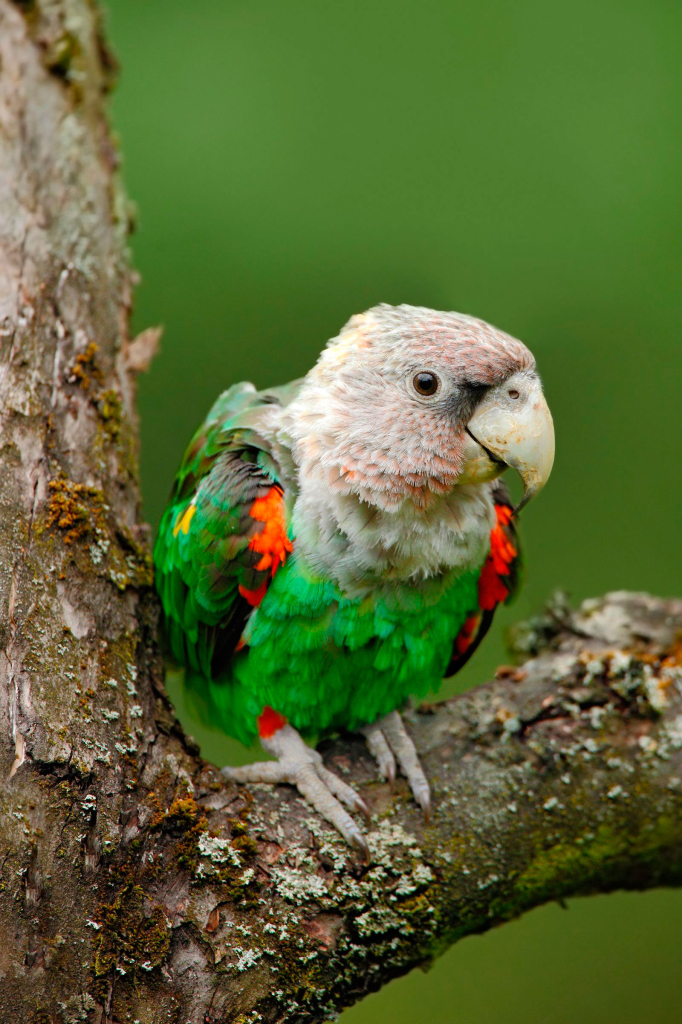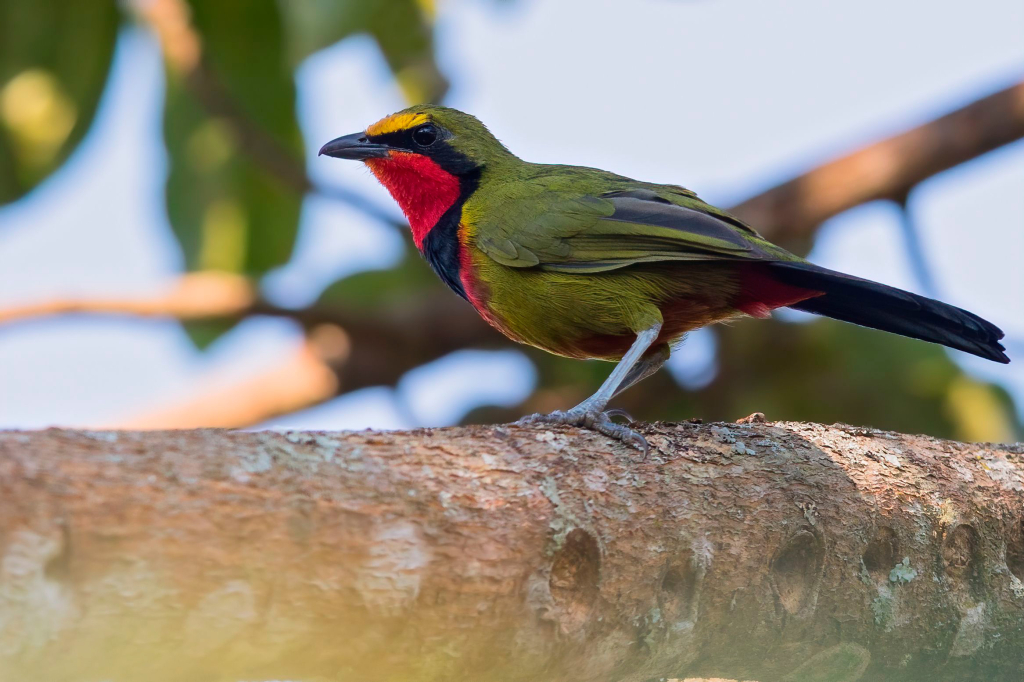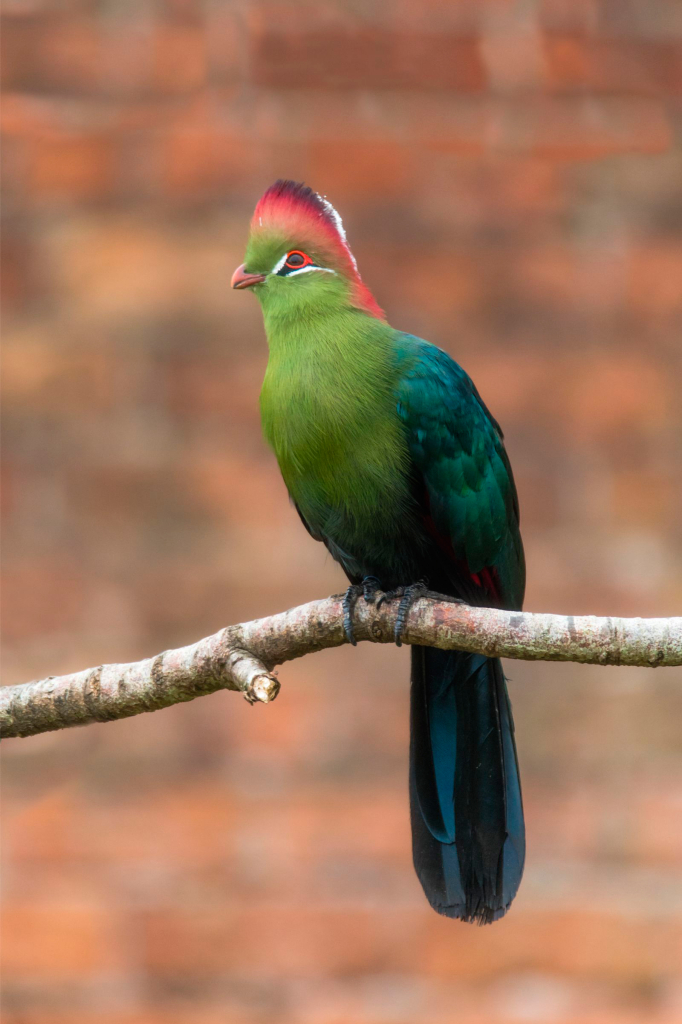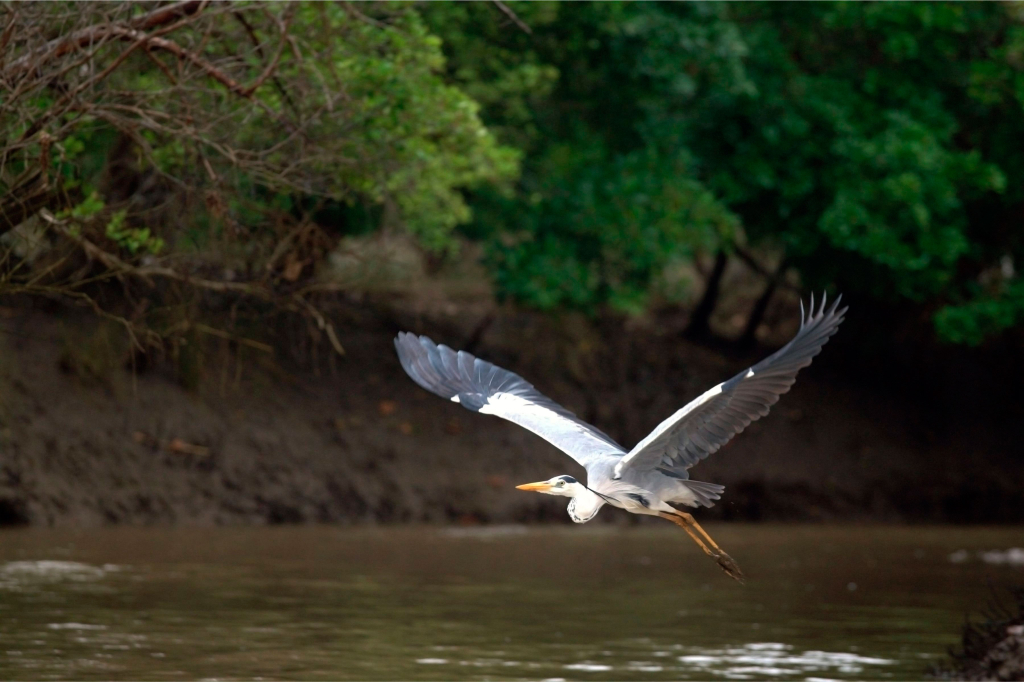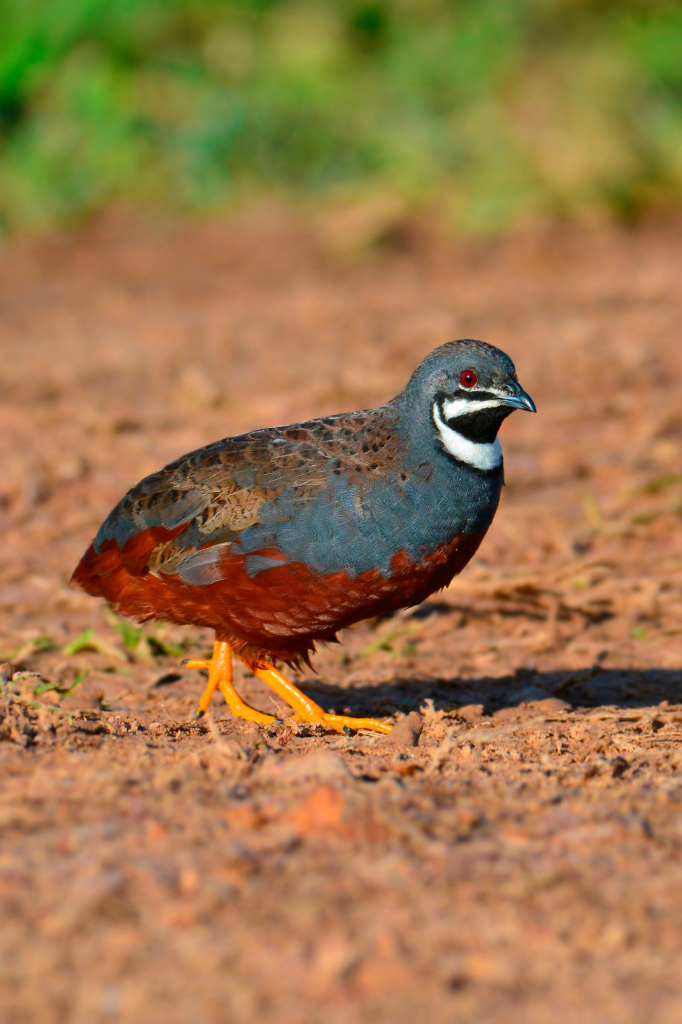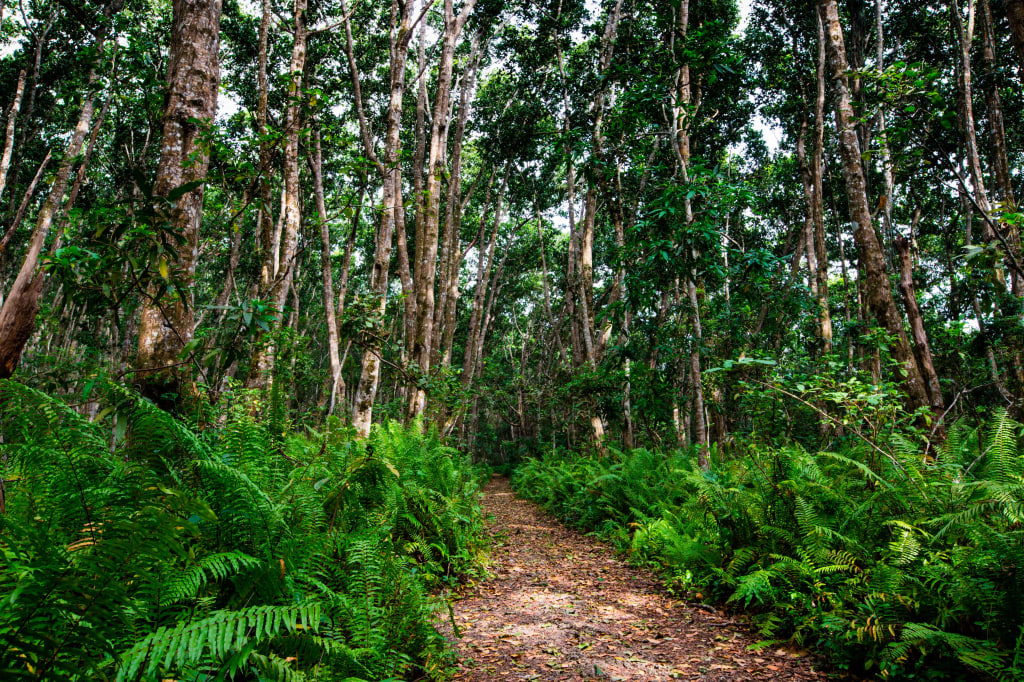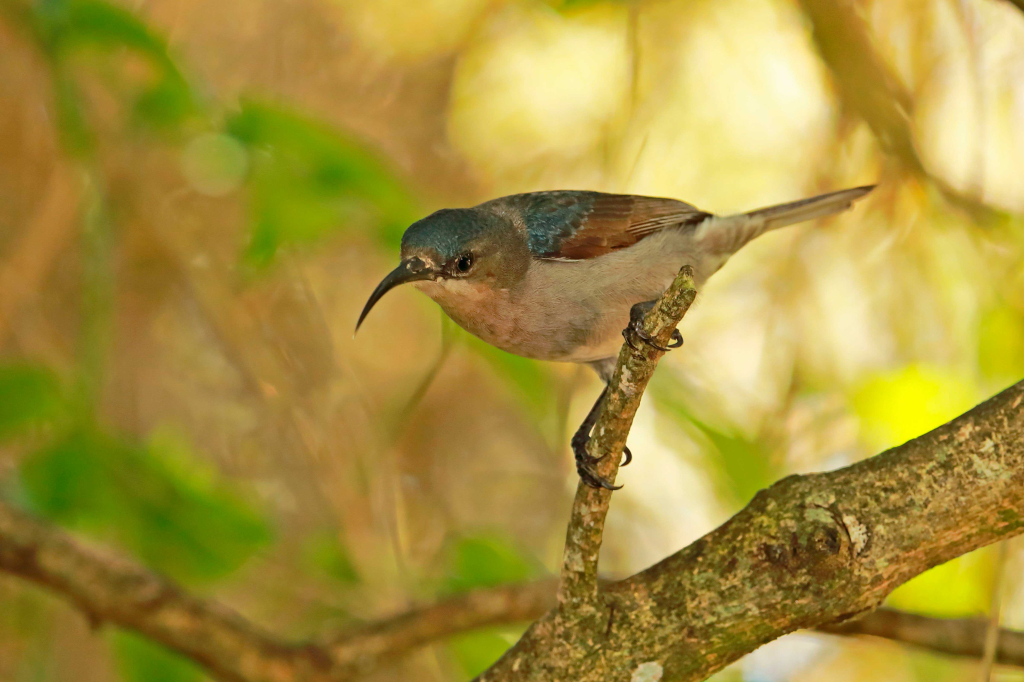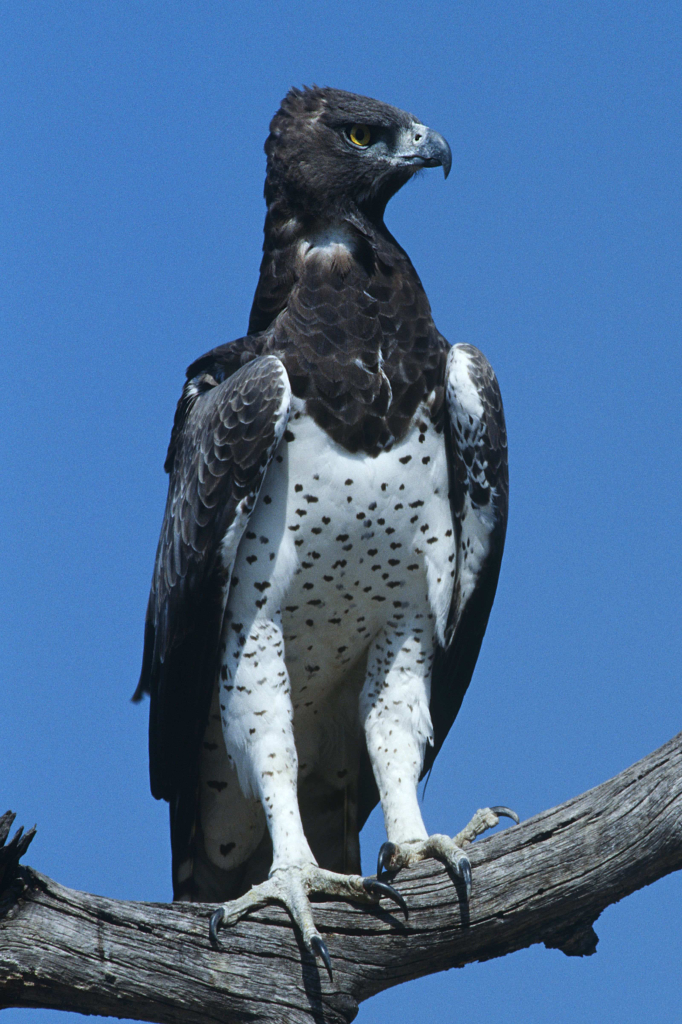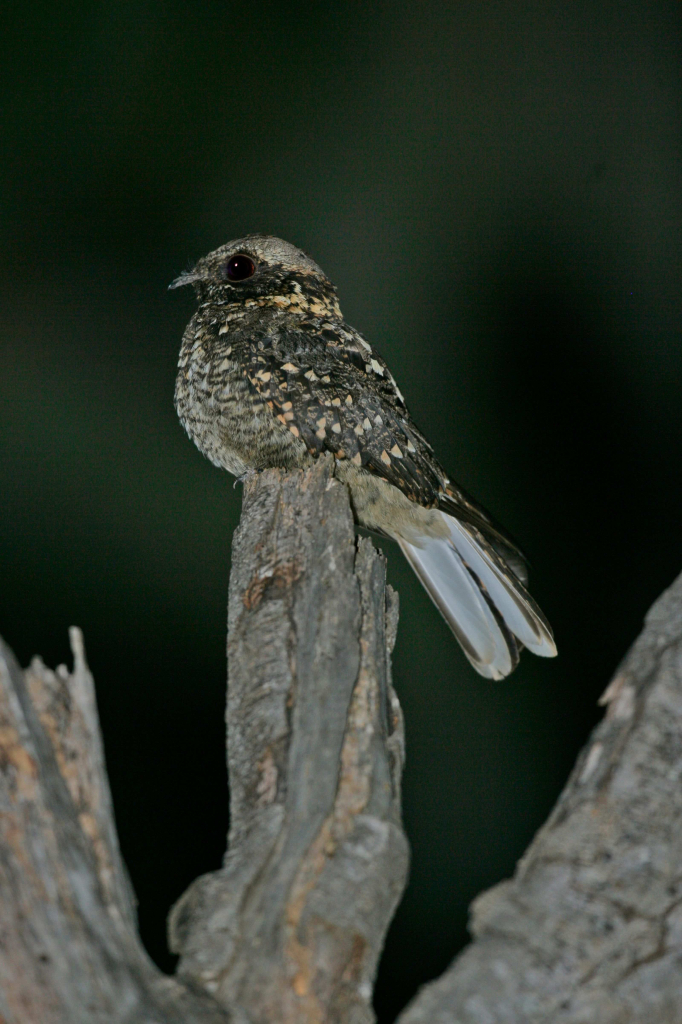In the east of mainland Tanzania, in a natural gulf on the shores of the Indian Ocean sits the country's largest city, Dar es Salaam, often mistaken for the capital. Because of the high degree of urbanization, bird habitats here have been degraded, yet the coastal zone retains an important bird area, which also attracts numerous migrant birds. The same is true of other coastal areas in Tanzania - they make amazing Tanzania birding destinations.
North of Dar es Salaam, there is the Saadani National Park right next to the ocean. Moreover, the areas adjacent to the NP are quite diverse in their bird populations. Opposite the continental coast, a few dozen kilometers offshore, there is an archipelago of three large islands and many smaller ones. Their shores also attract birds, some of which are endemic. Those places would be of interest to birdwatching looking to explore the stunning nature of coastal Tanzania and expand their life lists with many wonderful species on a birding trip to Tanzania.
We'll talk about the island of Unguja, known as Zanzibar, at the end of the article, and about the nearest large protected wildlife areas in the article about Selous and Mikumi birds. And if you would like to find out about all other locations of interest to birdwatchers in Tanzania - read our overview article "Tanzania. Top 10 Locations for Birdwatching".
In this article about Tanzanian birds, we will explore the birding areas of Dar es Salaam, Pande Game Reserve, Bagamoyo coast, coastal forests of the Kisarawe district, Zanzibar Island, and more.
The coast of Dar es Salaam
Dar es Salaam is the largest city in Tanzania and in all of East Africa. Its coastal area includes mostly beaches and, in some places, mangroves. The ornithologically interesting bird area is a narrow strip of coastline stretching for 40 kilometers (25 miles). It also includes a 12-kilometer maritime zone up to the international borders, adding to this area a habitat for seabirds that rarely come close to shore.
A large local population of Black Herons (Egretta ardesiaca) lives here. They are very interesting to observe as they hunt for fish in the water. Walking in shallow water, herons spread their wings as if they are covering themselves with a cloak or creating an umbrella with their heads under it. This way they don't get in the way of the sun glare and can see the fish underwater, which they immediately pierce with their sharp beak as soon as they notice it. In addition, Black Herons don’t mind eating frogs and crustaceans. When a flock of these birds wanders on the shallows, it seems as if black bumps protrude over the water. This sight is especially spectacular when dozens of birds gather in one nesting area. Fortunate observers have seen huge flocks of about 1,500 Black Herons in Tanzania.
The coastal area of Dar es Salaam is visited by many migrant birds, including the Curlew Sandpiper (Calidris ferruginea), Little Stint (Calidris minuta), and Grey Plover (Pluvialis squatarola). All of these species nest in the Arctic tundra of Siberia and come to Africa for wintering. Also in March and April, huge flocks of Common Greenshanks (Tringa nebularia) and Lesser Sand Plovers (Charadrius mongolus) can be seen here. These birds traditionally live in northern Asia, and in the early-mid spring, they return from wintering in southern parts of Africa, resting on the sandy beaches of East Africa during their long flights. Lesser Sand Plovers use southern Asia and Australia as well as the many islands in between for wintering but many of them also choose Africa for their destinations.
In addition to the coastal strip, many birds also use small islands a short distance from Dar es Salaam. For example, on Mbudya Island, which is part of the local marine reserve’s island group, we observed nesting African Spoonbills (Platalea alba), Dimorphic Egrets (Egretta garzetta), and African Sacred Ibises (Threskiornis aethiopicus). There can be confusion with Dimorphic Egrets because they are sometimes classified as Egretta dimorpha, and are considered a subspecies of the above species. This scientific name refers to dimorphism, as the egret is known in two morphs: black and white. Sacred Ibises, on the other hand, as the name might suggest, were seen as very special birds, which means that they once suffered greatly from humans.
In ancient Egypt, these birds were worshipped and... exterminated. Ibis was considered the earthly incarnation of the god Thoth, one of the most important deities of Egyptian mythology. You've probably seen a picture of a man with a bird's head and a long, bent-down beak - that's Thoth. People thought they were doing a good deed by sacrificing captured and killed birds to this god. Pilgrims were coming from all over the country to the main temples in Egypt carrying dead ibises. At one point the temples mummified and stored thousands of ibises a year in huge catacombs. According to some estimates, the ancient Egyptians killed and mummified an estimated 8 million birds of this species because of religious beliefs. Currently, the species is not seriously threatened, populations are numerous, and the species has been introduced to other parts of the world, including Europe. Everywhere the sacred ibis is abundant except in one country - Egypt.
Many different species are observed on the islands near Dar es Salaam, including a bird with an interesting behavior - the Roseate Tern (Sterna dougallii). Although the kleptoparasitic behavior is not typical for terns in general, the Roseate Tern actively steals fish from other birds. This helps it get fish in bad weather when they go deeper into the water beyond the tern’s reach. If you observe the Roseate Tern during the normal period, you won't notice anything pink about it. However, during the mating season, the breast of this bird turns pink, hence its name.
There are a huge number of birds on the islands, on the shore, and on the water away from it. More than 450 species have been recorded in this area. You can visit the islands, at least those popular with tourists, by boat, which is easy to rent at the piers of Dar es Salaam. Arrangements can also be made with boaters to visit the other, non-beach islands, and to go out into the open sea to watch birds fishing.
Pande Game Reserve
Not far from Dar es Salaam are the Pande Game Reserve and Dondwe forest. You can reach them by driving away from the city on the road from Dar es Salaam to Bagamoyo. This is not a large but important bird area, given the active urbanization around Tanzania's largest metropolis. At the same time, the boundaries of the Dondwe forest are not clearly marked. Many species here overlap with the list of birds from the nearby Pugu Hills Forest Reserve.
Pande is home to the Southern Banded Snake Eagle (Circaetus fasciolatus), a small bird called East Coast Akalat (Sheppardia gunningi), the migratory Spotted Ground Thrush (Geokichla guttata), which rests in this area during long flights, and the Sokoke Pipit (Anthus sokensis), classified as Endangered.
In the forests you can observe the Little Yellow Flycatcher (Erythrocercus holochlorus), Red-tailed Ant Thrush (Neocossyphus rufus), Yellow-streaked Greenbul (Phyllastrephus flavostriatus), Common Square-tailed Drongo (Dicrurus ludwigii), African Broadbill (Smithornis capensis), Narina Trogon (Apaloderma narina) and representatives of many other species. By the way, the name of the trogon hides a love story between a French explorer of Africa and a beautiful African woman from the Gonakwa ethnic group.
Ornithologist François Levalien, traveling in the last quarter of the 18th century through southern Africa, was fascinated by a young woman of the Xhosa people. In his notes, he described how they flirted with her, which influenced the 18th-century early South African novels about romantic relationships between Europeans and African women. He named her Narina, which means "flower" in the Khoekhoen are the nomadic indigenous people of southwestern Africa. Their language predates the Bantu languages. language. That word remains in history in the name of the colorful bird he later discovered and described. It is believed that it was François Levalian who pioneered the travel notes genre, and became the inventor of the popular type of travel - safari, although he did not use the word "safari" from the Swahili language for it, and it was added later.
There is also a local endemic in the Pande Game Reserve - the Pale-breasted Illadopsis (Illadopsis rufipennis). In this case, we are talking about the subspecies Illadopsis distans puguensis, which was observed not only in the Dondwe forest, but also, as the scientific name suggests, in the mentioned Pugu Hills forest.
Bagamoyo Coast
North of Dar es Salaam there is the city of Bagamoyo, also on the Indian Ocean. It is surrounded by several forest reserves, the most explored of which is the Zaraninge Forest. It is home to large numbers of Brown-necked Parrot (Poicephalus fuscicollis), which have large strong beaks. With their help, parrots are able to split the hardest nuts and fruit seeds, which distinguishes them from other related species living in savannahs.
In the same forest, you can see the Crowned Hornbill (Lophoceros alboterminatus), Narina Trogon (Apaloderma narina), and the Little Spotted Woodpecker (Campethera cailliautii). All these species nest here in greater numbers than in similar forests nearby. The Plain-backed Sunbird (Anthreptes reichenowi) and Gorgeous Bushshrike (Telophorus viridis) are also quite common here.
The Sokoke Pipit (Anthus sokokensis) is considered one of the most interesting species inhabiting this area. Also of interest to ornithologists is the White-starred Robin (Pogonocichla stellata), which might be using the Zaraninge forest for wintering.
It is worth bearing in mind that this same area includes Saadani National Park, the only NP in all of mainland Tanzania with direct access to the ocean. More than 300 species of birds are observed in this park. Among them is a very beautiful species, yet close to vulnerable - the Fischer's Turaco. It received its name after an explorer of Africa Gustav Adolf Fischer was an explorer of Africa, a traveler, and a military doctor from the German Empire. Starting from 1878 he traveled in East Africa on expeditions of the Dengardt brothers in what is now Kenya. Later he lived in Zanzibar (present-day Tanzania), working as a doctor. In 1882 he made an independent journey from the mouth of the continental Pangani River to Lake Naivasha, thus traversing the vast lands of the Maasai people. On this expedition, he observed beautiful parrots, which he named in his honor, Fisher's Lovebirds. He is also known for his unsuccessful attempt to find other explorers of Africa, among them the German Emin Pasha and the Russian-German traveler Wilhelm Junker, but he returned to Zanzibar without success. He soon fell ill with tropical fever, which took his life. Another bird species, Fischer's Greenbul (Phyllastrephus fischeri), is also named after him.
A total of 11 globally threatened species are listed for the Saadani National Park. First of all, this list includes many birds from the Accipitridae family, as well as several species of Scolopacidae (Sandpipers). Many birds appear near the Wami River, especially near its mouth. It is to this place that the national park invites bird watchers, in addition to the Zaraninge Forest.
Coastal forests of the Kisarawe district
Southwest of Dar es Salaam you can find low hills with dense forests that receive a lot of rainfall, which makes the ground flora in that area very rich. This attracts birds. They live in three forest reserves of the zone, two of which are better studied: Pugu Hills and Kazimzumbwi. But the avifauna is under pressure from land cultivation and deforestation, so you won't find as many species as in previous locations here.
This area is believed to be home to Tanzania's largest population of the East Coast Akalat (Sheppardia gunningi). Other birds observed here include the African Barred Owlet (Glaucidium capense), Böhm's Spinetail (Neafrapus boehmi), Thick-billed Cuckoo (Pachycoccyx audeberti), Bennett's Woodpecker (Campethera bennettii) and Lesser Seedcracker (Pyrenestes minor). In general, the bird species living in the forest hills of Kisarawe overlap to a large extent with the inhabitants of the Pande Game Reserve.
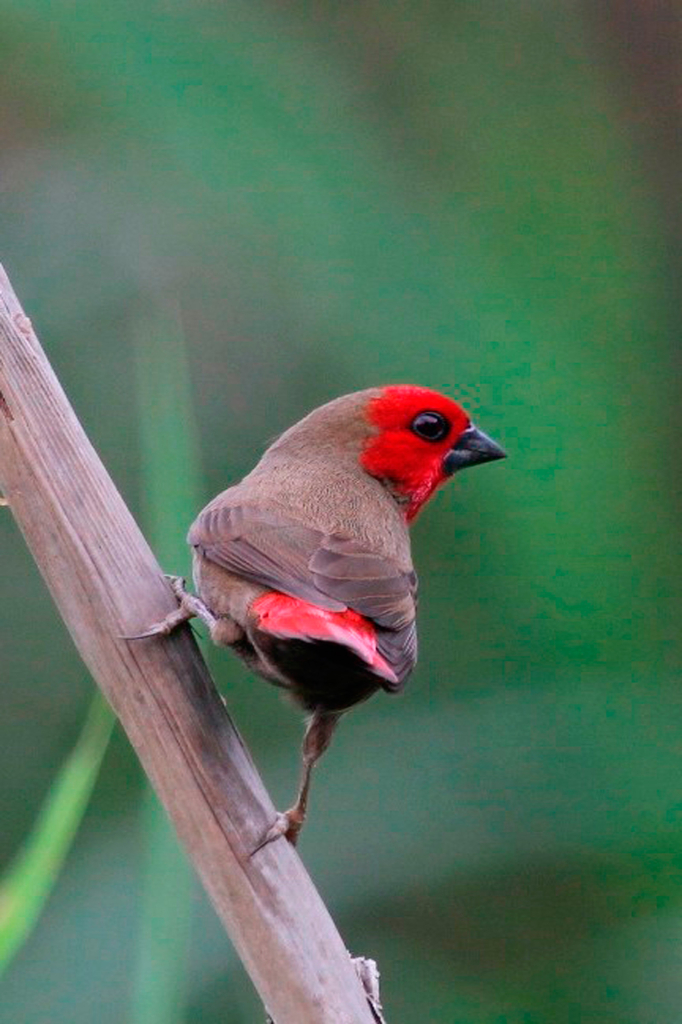
Of the unusual migrants, every birder will be interested to see the King Quail (Synoicus chinensis) here. These are very beautiful birds, inhabitants of Asia, Australia, and the islands in between. Other migratory species have also been spotted here: the Buff-spotted Flufftail (Sarothrura elegans) and Lemon Dove (Aplopelia larvata) aka the cinnamon dove, which spends much time on the ground and is thus noticeably different from other closely related species.

Other migrants also visit these forests, such as the Grey Cuckooshrike (Ceblepyris caesius), Orange Ground Thrush (Geokichla gurneyi) and Stripe-cheeked Greenbul (Arizelocichla milanjensis). Other brightly colored birds that are interesting to watch and photograph appear here too: the Ed-capped Robin-chat (Cossypha natalensis) and African Pitta (Pitta angolensis). The Pale-breasted Illadopsis (Illadopsis rufipennis) is a local endemic, as in the Dondwe forest nearby.
Unguja Island, Zanzibar
To the east of the Tanzanian mainland, in the Indian Ocean, the Zanzibar Archipelago lies 25-50 kilometers (15.5-31 miles) off the coast. The main island of the archipelago is called Unguja, but it is also commonly referred to as Zanzibar. The island has three small areas of interest for birders. First of all, it is the Jozani Forest. Jozani is the only forest left on the island, although it has been greatly altered by human intervention. More than 200 species have made the list of birds observed here.
Endemics that can be observed here are Fischer's Turaco, namely the subspecies Tauraco fischeri zanzibaricus, which can only be found on the island, as well as the Little Greenbul (Eurillas virens) - its endemic subspecies Eurillas virens zanzibarica, and the Grey Sunbird also known as Mouse-coloured Sunbird (Cyanomitra verreauxii/Cyanomitra veroxii) - subspecies Cyanomitra verreauxii zanzibarica. All these birds are known to live only on Unguja Island.
There is another sunbird here - the Olive Sunbird (Cyanomitra olivacea). The subspecies Cyanomitra obscura granti is found only on Unguja and Pemba, the two largest islands of the Zanzibar Archipelago. The Bearded Scrub Robin (Cercotrichas quadrivirgata) lives only on the islands of Unguja and Mafia. We are talking specifically about the subspecies Cercotrichas quadrivirgata greenwayi. Mafia is the third largest island in Tanzania, after Unguja and Pemba. It is part of the Zanzibar Archipelago geologically, but not administratively. Therefore, we will talk about the birds of Mafia in another article.

Also important for birding are the southern and eastern coasts of Unguja Island, which include Kiwani Bay and Chwaka Bay, respectively. Chwaka Bay is home to a huge number of waders. A very beautiful bird, of which hundreds of individuals are observed in the bay, is the Ruddy Turnstone (Arenaria interpres). It is so called because in search of food, it scours the shore with such care that it turns over rocks and shells, looking under them. Interestingly, such a rare guest as the Cape Gannet (Morus capensis) was observed here. Usually, their colonies nest on islands off Namibia and South Africa. On Unguja, it was seen near Paje Beach.
If we talk about the southern coast of Unguja, we should not so much talk about the bays and coastal stripes, but about the tiny coral islands to the west, primarily Chumbe Island. On Chumbe and small islands nearby you can spot the Roseate Tern (Sterna dougallii), red-capped robin-chat (Cossypha natalensis), and Common Reed Warbler (Acrocephalus scirpaceus). In total, almost 350 bird species have been recorded on Unguja. This island, along with the other areas we looked at in this article, makes a great destination for curious.
All content on Altezza Travel is created with expert insights and thorough research, in line with our Editorial Policy.
Want to know more about Tanzania adventures?
Get in touch with our team! We've explored all the top destinations across Tanzania. Our Kilimanjaro-based adventure consultants are ready to share tips and help you plan your unforgettable journey.

















